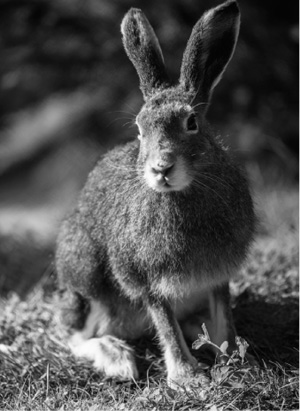Anatomy: Animals InsideDigestion |
How do rodents, rabbits, and hares digest plant material? |
Cows—mammals called ruminants—have four stomachs in order to process their low-quality diet of grass; they eat rapidly and do not completely chew much of their food before swallowing. The liquid part of their food enters what is called the reticulum first, while the solid part of their food enters what is called the rumen, where it softens. Bacteria in the rumen break the food material down as a first step in digestion. Ruminants later regurgitate the partially liquefied plant parts into their mouth, where they continue to munch it in a process known as “chewing their cud.” Cows chew their cud about six to eight times per day, spending a total of five to seven hours in rumination. The chewed cud goes directly into the other chambers of the stomach, where various microorganisms assist in further digestion. And to give their intestines time to absorb nutrients, these herbivores have a longer small intestine than most mammals.
Unlike cows that have a rumen to digest cellulose (plant material), herbivores such as rabbits and hares have a cecum, a large pouch that aids in digestion with the assistance of microorganisms. The cecum is located at the junction between the small and large intestines. It is impossible for these animals to regurgitate the contents of their stomachs (like ruminants) because the cecum is located beyond the stomach. Instead, these animals pass their food through their digestive tract a second time by ingesting their feces. When feces pass through the digestive tract, it is possible for these animals to absorb the nutrients produced by the microorganisms in the cecum.

Rabbits and hares, such as this mountain hare, have a cecum in their intestines that helps them to digest the plant matter that makes up their diet.
